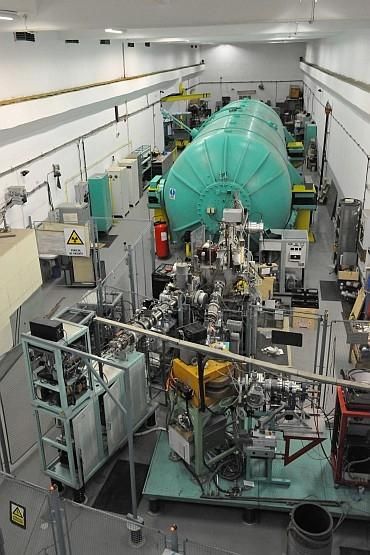Quartz crystal microbalances enable new microscale analytic technique
A new chemical analysis technique developed by a research group at the National Institute of Standards and Technology (NIST) uses the shifting ultrasonic pitch of a small quartz crystal to test the purity of only a few micrograms of material. Since it works with samples close to a thousand times smaller than comparable commercial instruments, the new technique should be an important addition to the growing arsenal of measurement tools for nanotechnology, according to the NIST team.
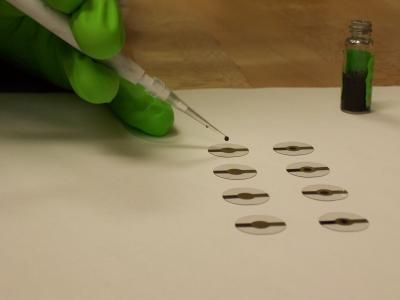
A NIST researcher prepares quartz crystal microbalance disks with samples of carbon nanotubes for microscale thermogravimetric analysis. Typical sample sizes are about 2 microliters, or about 1 microgram.
Kar/NIST
As the objects of scientific research have gotten smaller and smaller—as in nanotechnology and gene therapy—the people who worry about how to measure these things have been applying considerable ingenuity to develop comparable instrumentation. This new NIST technique is a riff on thermogravimetric analysis (TGA), an imposing name for a fairly straightforward concept. A sample of material is heated, very slowly and carefully, and changes in its mass are measured as the temperature increases. The technique measures the reaction energy needed to decompose, oxidize, dehydrate, or otherwise chemically change the sample with heat.
TGA can be used, for example, to characterize complex biofuel mixtures because the various components vaporize at different temperatures. The purity of an organic sample can be tested by the shape of a TGA plot because, again, different components will break down or vaporize at different temperatures. Conventional TGA, however, requires samples of several milligrams or more of material, which makes it hard to measure very small, laboratory-scale powder samples—such as nanoparticles—or very small surface chemistry features such as thin films.
What's needed is an extremely sensitive "microbalance" to measure the minute changes in mass. The NIST group found one in the quartz crystal microbalance, essentially a small piezoelectric disk of quartz sandwiched between two electrodes. An alternating current across the electrodes causes the crystal to vibrate at a stable and precise ultrasonic frequency—the same principle as a quartz crystal watch. Added mass (a microsample) lowers the resonant frequency, which climbs back up as the microsample is heated and breaks down.
In a new paper the NIST materials science group demonstrates that their microbalance TGA produces essentially the same results as a conventional TGA instrument, but with samples about a thousand times smaller. They can detect not only the characteristic curves for carbon black, aluminum oxide and a sample organic fluid, but also the more complex curves of mixtures.
"We started this work because we wanted to analyze the purity of small carbon nanotube samples," explains analytical chemist Elisabeth Mansfield. More recently, she says, they've applied the technique to measuring the organic surface coatings biologists put on gold nanoparticles to modify them for particular applications. "Measuring how much material coats the particles surface is very hard to do right now," she says, "It will be a really unique application for this technique."
The prototype apparatus requires that the frequency measurements be made in a separate step from the heating. Currently, the team is at work integrating the microbalance disks with a heating element to enable the process to be simultaneous.
Original publication: E. Mansfield, A. Kar, T.P. Quinn and S.A. Hooker; "Quartz crystal microbalances for microscale thermogravimetric analysis"; Anal. Chem. Article ASAP, published online Nov. 16, 2010
Topics
Organizations
Other news from the department science
These products might interest you

OCA 200 by DataPhysics
Using contact angle meter to comprehensively characterise wetting behaviour, solids, and liquids
With its intuitive software and as a modular system, the OCA 200 answers to all customers’ needs

Tailor-made products for specific applications by IPC Process Center
Granulates and pellets - we develop and manufacture the perfect solution for you
Agglomeration of powders, pelletising of powders and fluids, coating with melts and polymers

Dursan by SilcoTek
Innovative coating revolutionizes LC analysis
Stainless steel components with the performance of PEEK - inert, robust and cost-effective

Get the chemical industry in your inbox
By submitting this form you agree that LUMITOS AG will send you the newsletter(s) selected above by email. Your data will not be passed on to third parties. Your data will be stored and processed in accordance with our data protection regulations. LUMITOS may contact you by email for the purpose of advertising or market and opinion surveys. You can revoke your consent at any time without giving reasons to LUMITOS AG, Ernst-Augustin-Str. 2, 12489 Berlin, Germany or by e-mail at revoke@lumitos.com with effect for the future. In addition, each email contains a link to unsubscribe from the corresponding newsletter.
Most read news
More news from our other portals
Last viewed contents
Plasma_Physics_Laboratory_(Saskatchewan)
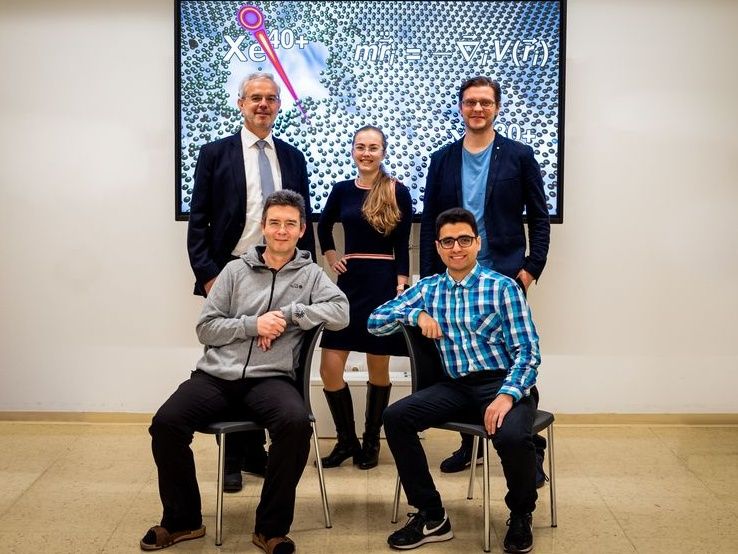
How to fire projectiles through materials without breaking anything - It sounds a bit like a magic trick

Researchers overview recent progress and challenges in silicon-based anode materials for lithium-ion batteries
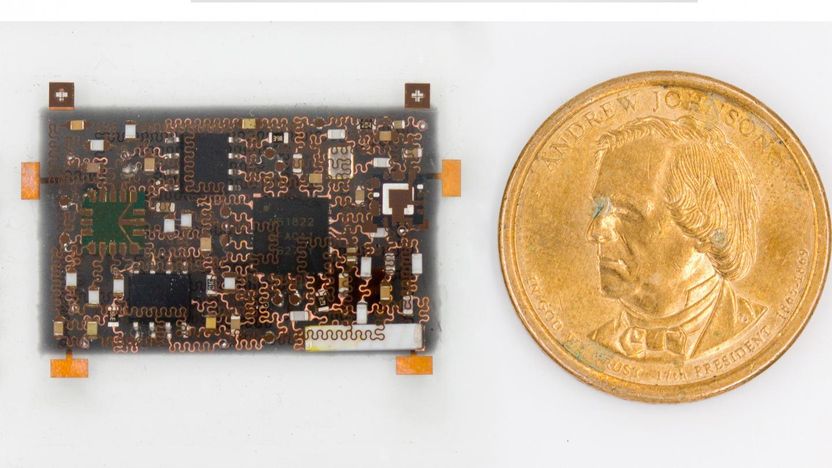
'Building up' stretchable electronics to be as multipurpose as your smartphone

Models for molecules show unexpected physics - Rice engineers show spinning magnetic particles surprisingly follow thermodynamic laws
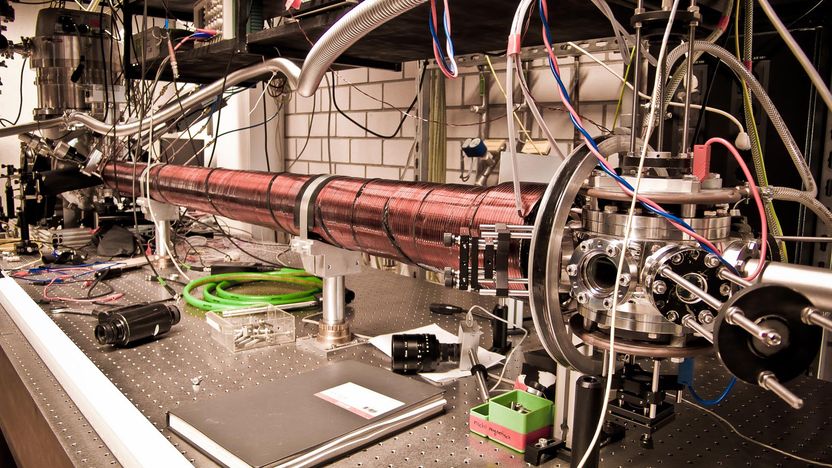
Help in the Search for the Needle in the Haystack - Physicists render usable method for detecting extremely rare inert gas isotopes for water dating
Category:EC_1.7.1
